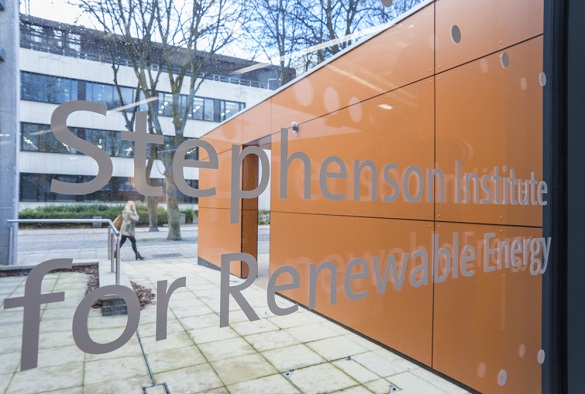Research between the University of Liverpool, UK and National Tsing Hua University (NTHU), Taiwan has revealed a new charge storage mechanism that has the potential to allow rechargeability within calcium-air batteries.
In a paper published in the journal Chemical Science, Professor Laurence Hardwick from the University of Liverpool’s Stephenson Institute for Renewable Energy (SIRE) and colleagues discover a distinctive form of charge storage at the electrode interface described as trapped interfacial redox. This new finding introduces a new mechanism of charge storage that could be harnessed in practical devices.
Lead author of the paper, Yi Ting (Leo) Lu, is a joint PhD student in the dual PhD programme between the University of Liverpool and National Tsing Hua University. He said: “We started investigating these electrolyte systems as part of understanding how to develop a metal-air battery based upon calcium metal, which is a highly earth abundant element, creating a highly sustainable battery technology.”
“The research explores the formation of an electrochemically generated interlayer coating on electrode surfaces that confines the reduced form of oxygen gas known as superoxide, allowing it to then be readily oxidised.”
The research was carried out in an electrolyte designed for a calcium-air battery, which had so far been shown to be practically irreversible. The research team noticed that, when the electrode was cycled many tens of times, the electrochemical process became steadily more reversible, and a series of experiments were conducted to fully understand the mechanism.
Dr Alex Neale, who is also part of the research team, said: “Through systematic electrochemical and spectroscopy investigations, we began to understand the origins of this reasonably strange and exciting new process appearing in our measurements. The new mechanism of trapped interfacial redox we defined facilitates a previously unseen degree of reversibility for systems based on the calcium-air battery.”
Further work will explore how readily this phenomenon is observed in different electrolyte systems and to understand whether the charge stored can be further exploited, scaled up and used in a practical system for energy storage.
Due to the UK lockdown in March 2020, Yi Ting (Leo) Lu returned to Taiwan 6 months earlier than planned, so to complete the study the team set up parallel experiments within both Liverpool and NTHU labs to cross compare results and ensure reproducibility of observations.
The collaborative research between the two University research groups in Liverpool and NTHU was made possible by support through the Dual PhD Programme, funding from the EPSRC for the project Earth-Abundant Metal-Air Batteries (EP/R020744/1), The Calcium-Air Battery (EP/R000441/1), MOST-Taiwan for the project Developing the Key Materials of Flexible Zn-air Batteries (MOST 108-2221-E-007-072-MY3) and NTHU for the project Development and Integration of Key Technologies in Rechargeable Zn-air Batteries and Supercapacitors for the Mobile Powers (109Q2708E1 and 110Q2708E1).
The research has benefited from battery research and characterisation facilities at the Stephenson institute for Renewable Energy, University of Liverpool
The paper ‘ Trapped interfacial redox introduces reversibility in the oxygen reduction reaction in a non-aqueous Ca2+ electrolyte’ (doi.org/10.1039/D0SC06991D) is published in Chemical Science.
